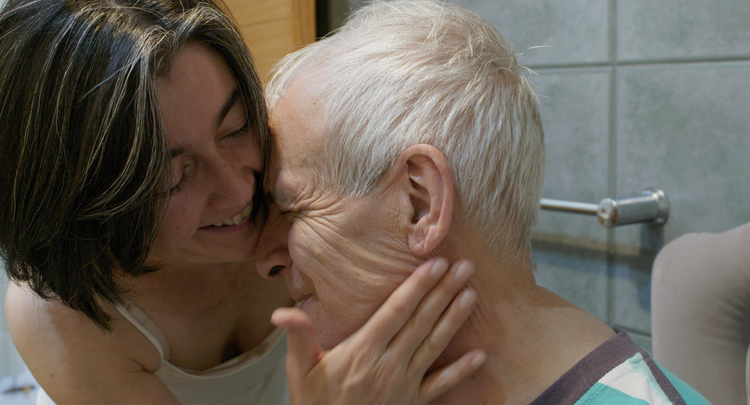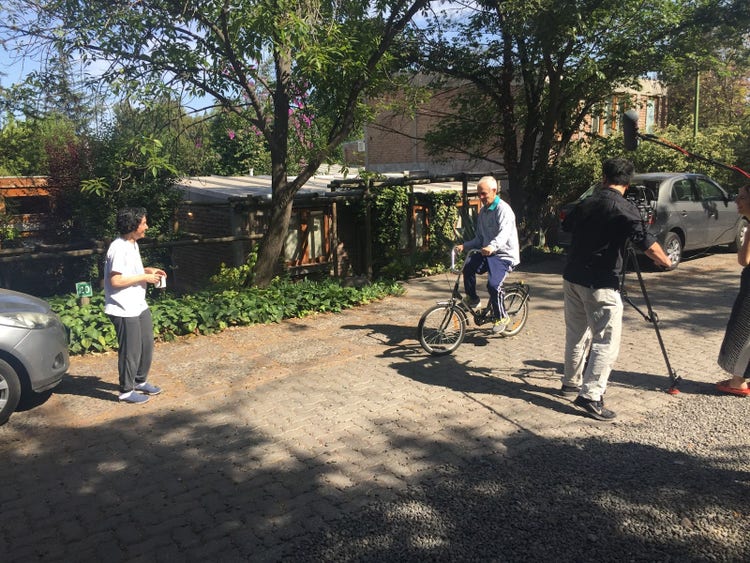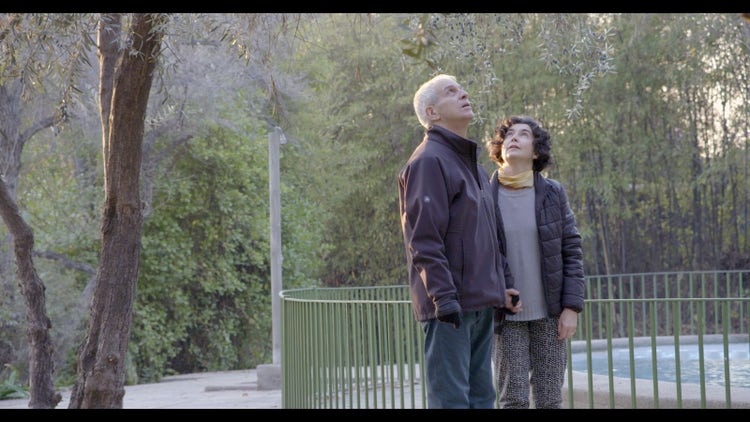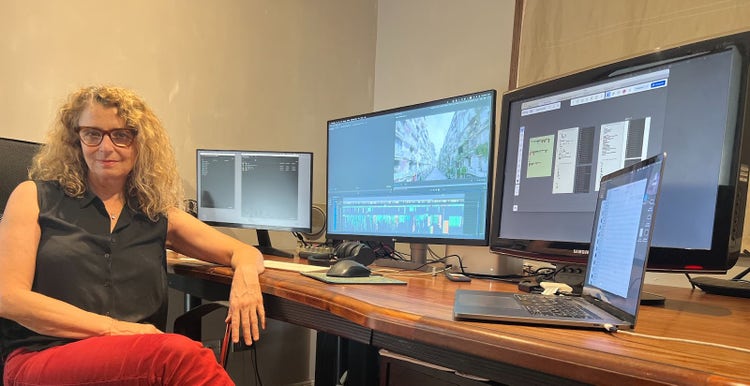Editing Oscar-nominated documentary “The Eternal Memory”

Nominated for an Oscar in the Documentary Feature Film category, “The Eternal Memory” tells a story about love, resilience, and patience. Augusto and Paulina have been together for 25 years, but their lives took an unexpected turn eight years ago when Augusto was diagnosed with Alzheimer's disease. Despite the challenges posed by his illness, Paulina has been by his side, providing unwavering care and support. Together, they confront the daily struggles brought on by Alzheimer's, yet they also find moments of tenderness and laughter that strengthen their bond.
This heart wrenching documentary was edited by Carolina Siraqyan who used Adobe Premiere Pro to craft the story.
How and where did you first learn to edit?
I started working as an editing assistant on “Moviolas”, the old analog way of editing, and that's where my lessons began, with an Argentinian editor, Carlos Marquez, who taught me the basic principles of editing.
How do you begin a project/set up your workspace?
When starting a project and setting up my workspace, I prioritize organization, particularly in documentary filmmaking. Having all the materials well-organized enables a smooth workflow and easy access to resources. In the case of this particular project, which extended over a long period, I organized the material chronologically, reflecting the order in which it was received during years of shooting. I created bins containing sequences of different situations arranged by date, with markers highlighting significant moments.

Image Source: MTV Documentary Films.
Tell us about a favorite scene or moment from this project and why it stands out to you.
I have three favorite moments in the movie. The first one is when they dance on stage. I really like that moment because, apart from the fact that it is set in a different scenario, it speaks about the inclusion that Paulina achieved with Góngora. Taking him to her workplace and seeing how others accepted and included him, culminating in him dancing on stage with all the actors, is truly heartwarming.
The second scene stands out to me as particularly challenging to edit due to its emotional impact. It marks a critical turning point in Augusto's illness progression, where he experiences a crisis with his books and his identity. It's a moment where he truly feels lost, and from that point onwards in the film, we witness the onset of Alzheimer's at a more significant level for him.
Lastly, the ending scene is one that I love. It fills me with hope and warmth. Despite the advanced stage of his Alzheimer's, he still remembers his love for her, expressing his desire to be with her forever. That moment deeply touches me and instills a sense of hope. The ending is truly beautiful.

Image Source: MTV Documentary Films.
What were some specific post-production challenges you faced that were unique to your project? How did you go about solving them?
One of the most important challenges was the archival materials because throughout the project, they arrived and were downloaded from many sites in all formats. They had to be matched in a standard format for the project to go well, and then one of the challenges was to find the places of origin of those files, to find the original, and also all the rights that the production team was getting. Since it was three years of work, sometimes we had to go back very far, that was an enormous challenge.
What Adobe tools did you use on this project and why did you originally choose them? Were there any other third party tools that helped enhance your workflow?
When I began working on “The Eternal Memory” in 2019, I wasn't familiar with how Premiere Pro Productions was utilized. However, in subsequent projects, I've come to appreciate and utilize it extensively. I particularly enjoy how efficiently Productions in Premiere Pro manages everything and how the program's stability has improved with this system.
We used Frame.io in our post-production. We utilized it to upload edits and provide feedback on mixes, color corrections, and other similar aspects. Personally, I didn't work with the director, Maite Alberdi, on editing using this tool, as we always reviewed cuts in person. However, now that I'm working more remotely, I find Frame.io to be an excellent tool, especially now that it's integrated with Adobe.
Who is your creative inspiration and why?
It's challenging to identify a single creative inspiration. I admire many people, and many artists. When I face a project, in the course of the project, one has many different emotions and becomes creatively inspired by different things — whether it's through music, movies, or everyday experiences. The emotions from the film often extend to other aspects of life, sparking creativity and ideas. Life synchronizes with the film and with the emotions that it makes you feel. You and the movie start to live through that. You listen to music and get inspired by that music, you see a movie and that movie also inspires you, or gives you ideas, and it's like the emotion that you have in the film hangs on the other things.
What’s the toughest thing you’ve had to face in your career and how did you overcome it? What advice do you have for aspiring filmmakers or content creators?
The toughest challenge I've faced in my career was balancing motherhood with work. In the ‘90s, it was frowned upon for women to prioritize their children over their careers, making it incredibly difficult to manage. My advice to aspiring filmmakers or content creators facing similar struggles is to prioritize what matters most to you and find a balance that works for you, even if it means challenging societal norms.

Image source: Carolina Siraqyan, “The Eternal Memory” editor.